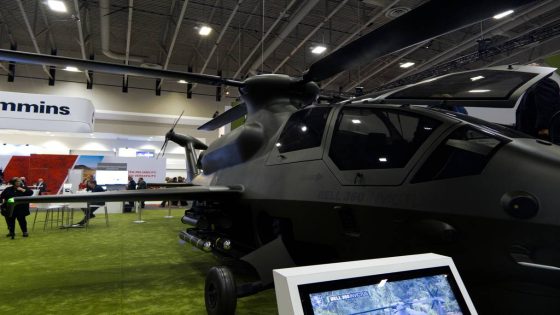DENVER â Since the Army canceled plans to develop a Future Attack Reconnaissance Aircraft earlier this year, the two anticipated competitors have both moved to make use of their work on the program.
The service is closing out its FARA effort at the end of fiscal 2024. Two teams â Textronâs Bell and Lockheed Martinâs Sikorsky â were competitively building prototypes expected to fly this year.
Jeff Schloesser, Bellâs executive vice president of strategic pursuits, told Defense News at the Army Aviation Association of Americaâs conference here earlier this month that the company had already installed the Armyâs Improved Turbine Engine Program, or ITEP, engine in its 360 Invictus aircraft prototype when it got word of the cancellation.
Sikorsky was in a similar boat, according to Paul Lemmo, the companyâs president. Shortly after hearing about the FARA cancellation, the company began proposing using the ITEP engine in its FARA prototype, known as Raider X, to test it ahead of its installation into the UH-60 Black Hawk helicopter, which the company also makes.
The Army plans to replace all Black Hawk and AH-64 Apache attack helicopter engines with ITEP engines in the coming years, but the program has been delayed due to technical issues as well as supply chain problems during the COVID-19 pandemic.
After the Army agreed to the plan, Sikorsky earlier this month used the ITEP engine in its FARA prototype at its West Palm Beach, Florida, test center, Lemmo said.
âIt performed well,â he said. âThis is the first time itâs under a full load in a real aircraft turning rotors. We collected that data at low speed, weâre analyzing it and the Armyâs authorized us to now run up to full speed on the ground to collect more data.â
ITEP will go into a Black Hawk for tests later this year, he noted.
Schloesser said the ITEP engine in Bellâs possession has already been sent back to General Electric Aerospace, the engineâs manufacturer.
The termination of the FARA program, he added, means the company has redirected engineers and specialists to the Future Long-Range Assault Aircraft program.
The Army is pursuing the FLRAA aircraft, expected to be fielded by 2031, to operate across long-distances more quickly. The Army in late 2022 chose Bell to build an aircraft based on its V-280 Valor technology demonstrator, and the program will soon enter the engineering and manufacturing development phase.
Bellâs manpower shift over to the FLRAA program is allowing the effort to move âa little bit faster than we anticipated,â Schloesser said.
He also said work on a Modular Open System Architecture, or MOSA, in the FARA program will benefit the FLRAA program.
Sikorsky, meanwhile, will seek a home for the X2 coaxial technology it was refining across both the Defiant platform, its failed candidate for the FLRAA competition, and Raider X.
The company is pursuing a next-generation helicopter for Italy and the NATO Next-Generation Rotorcraft Capability, according to Lemmo.
âThereâs a few other countries I wonât name that we are involved early in discussions about X2, so weâre going to continue to pursue that and see where that goes,â he said.
Jen Judson is an award-winning journalist covering land warfare for Defense News. She has also worked for Politico and Inside Defense. She holds a Master of Science degree in journalism from Boston University and a Bachelor of Arts degree from Kenyon College.
Source Agencies



